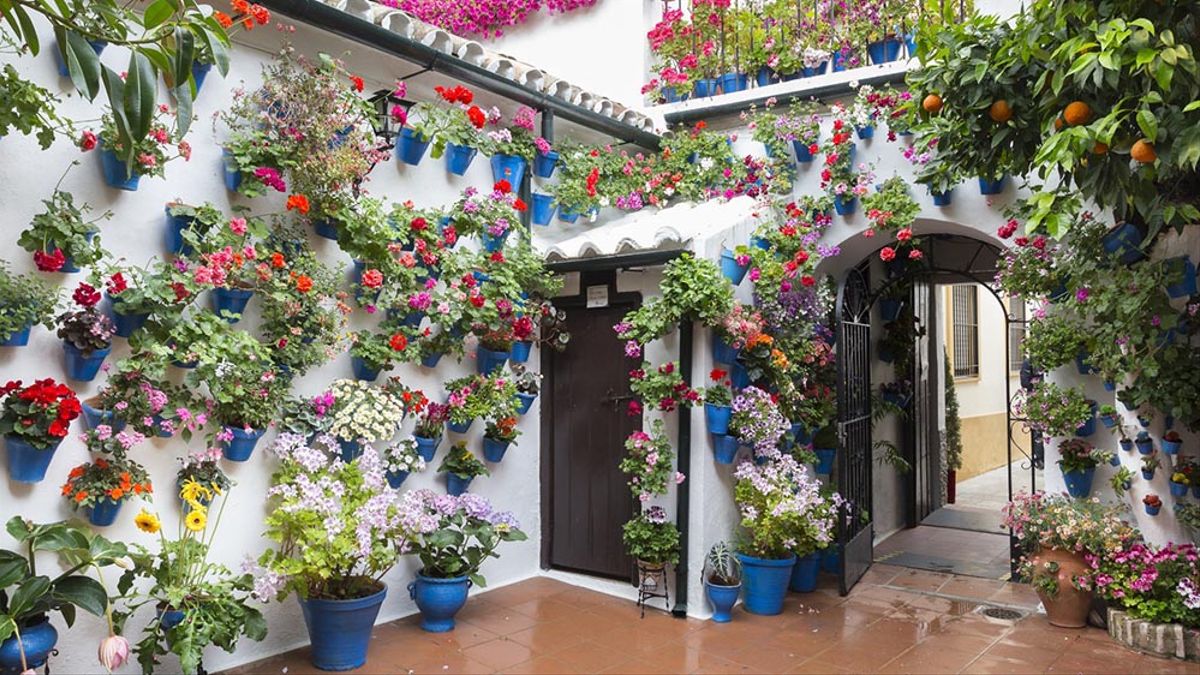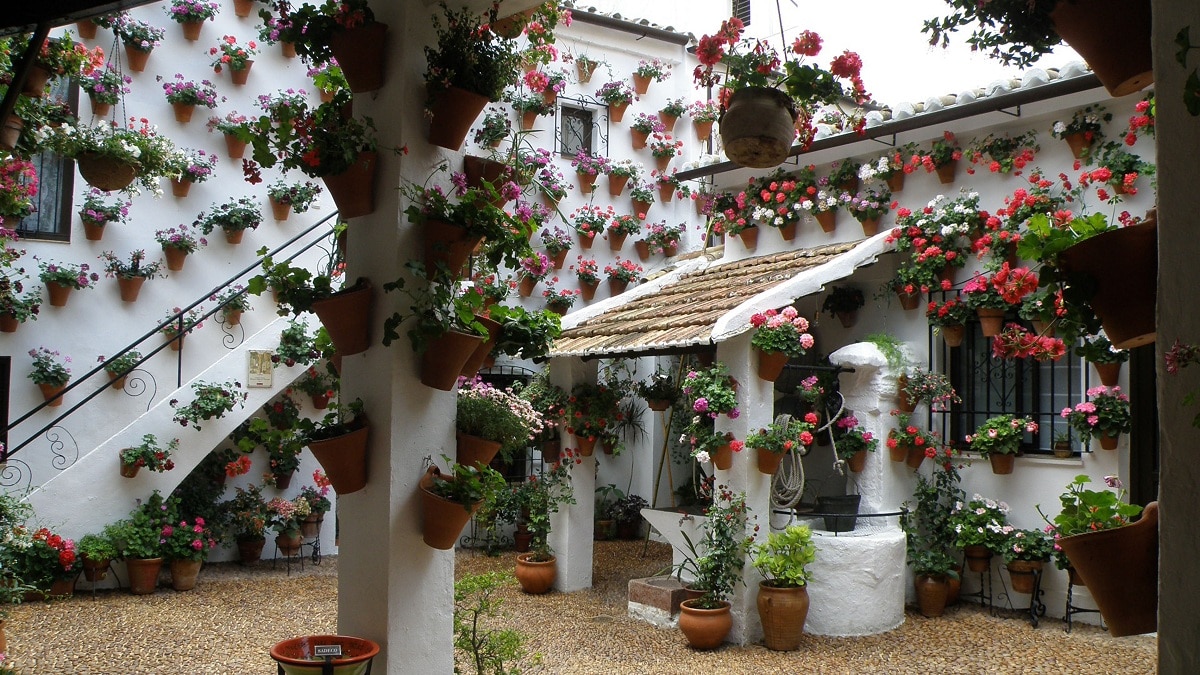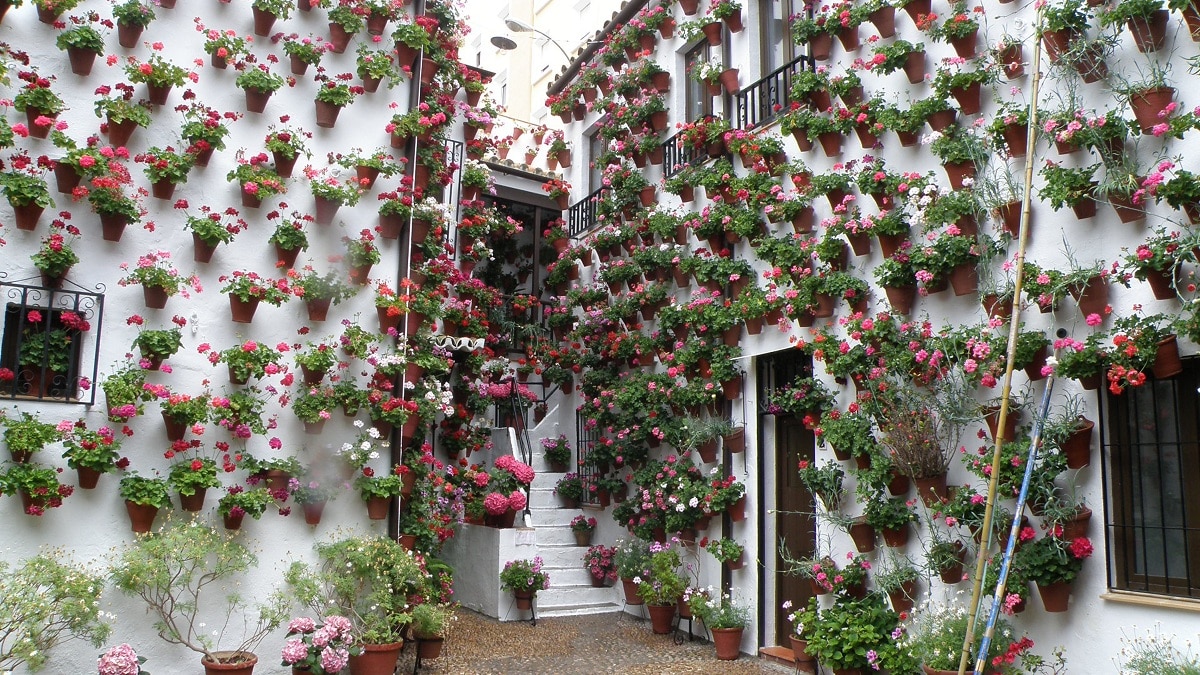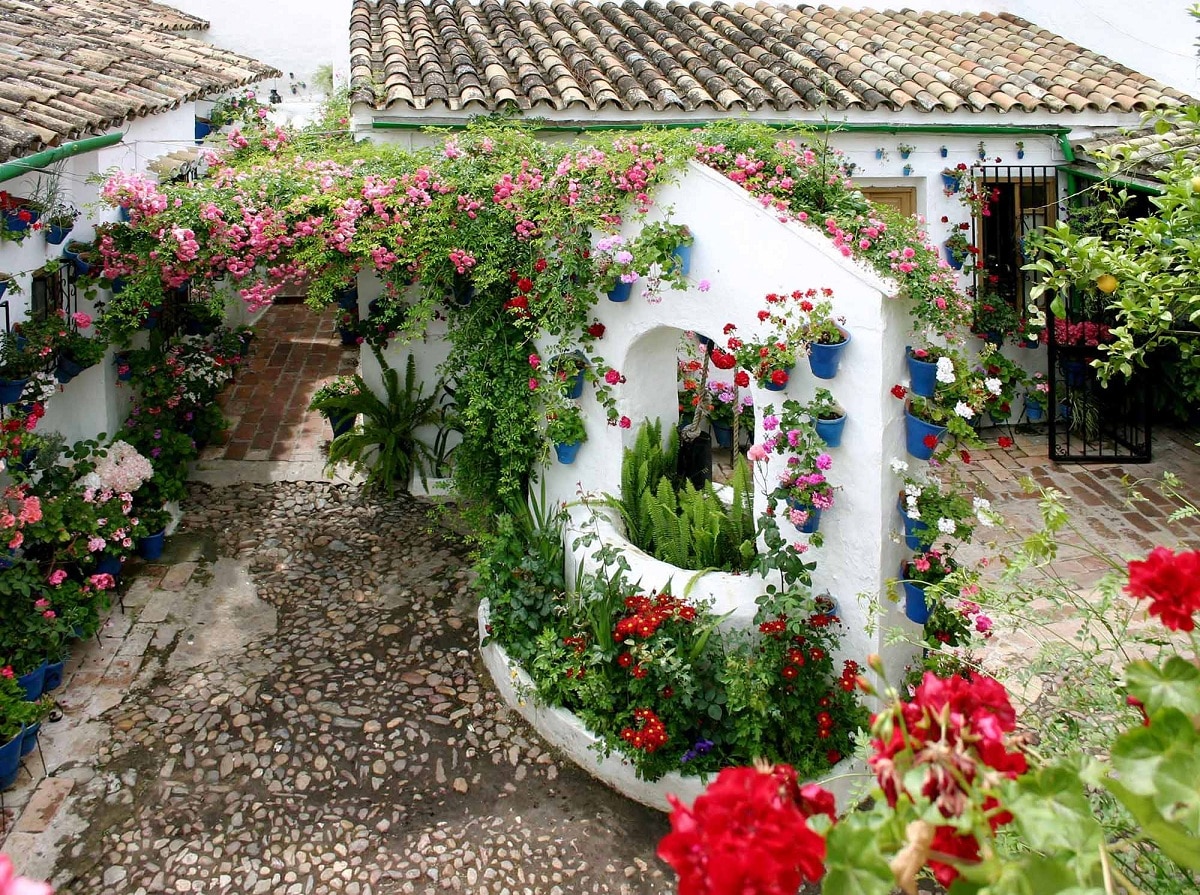
Every city worth its salt should have a good plant-based decor. The patios of Cordoba They are well known for having a multitude of flora species adapted to the ecosystem and climate of the place. They have an incalculable beauty and are well known and visited by tourists.
Therefore, we are going to dedicate this article to tell you all the characteristics, origin and evolution of the patios of Córdoba.
What are the patios of Córdoba

A patio is an open space in a home that can provide lighting and ventilation to other rooms. In addition, its proximity to them allows it to be used as a place of coexistence, and it is the center of family life.
The image of the Cordovan patio is inherited from the Islamic house, which is characterized by the construction of exterior walls oriented inwards. The appearance is irrelevant because it is composed of a simple blank wall. After Christianity conquered the city, this architectural structure was preserved and still remains in the existing houses. In addition to presenting the facade, the patio is also characterized by lots of flowers planted in flower beds and pots, which are hung on the upper wall or placed on a typical Cordovan Chinese sidewalk.
Alongside them, wells or fountains dot the walls, forming a beautiful image of water, light and vegetation, which clearly reflects the Arab history of the city. To complete the decoration, the owner usually includes antique furniture, iron kitchen utensils, shafts, column heads or other archaeological relics.
Types of patios in Córdoba

The three indices that best represent the courtyard of the monastery are:
- Reincarnation Monastery: It is one of the Cordovan courtyards closest to the mosque-cathedral and one of the oldest foundations in Córdoba, it originated in 1503 when it was the Beguinage. It became a Cistercian monastery in 1509. The decoration of this terrace is very simple, with a palm tree in the center, pilistras in pots, ribbons, ferns and Adam's ribs.
- Convent of Santa Isabel: Founded at the end of the 1576th century by Madame Marina de Villaseca, it welcomes poor Clara de Santa Isabel de los Ángeles. On either side of the compass there are colonnades and semicircular arches supported by solid rectangular pillars. The history of its mannerist appearance dates back to XNUMX. In the courtyard we can find two cypress trees, a vine and some bushes, such as jasmine and Celinda.
- Capuchina Monastery. This is a monastery belonging to poor Clare Abbey. In 1655, under the dedication of San Rafael Arcángel, the owner of this immense property, the Dukes of Sessa, founded it so that one of his daughters could enter as a novice. The patio that we can visit consists of four galleries, three of which have arches and arched columns, and on the other side are whitewashed arches and columns. The capital shows a great diversity, Romans, Visigoths and Caliphs. Regarding vegetation, we can find bitter orange trees, celinda and different ferns in pots, pilistras, banyan trees, palm trees, clivia, ribbons.
Religious courtyards

In the patio of Córdoba, we can find a religious patio. Here it is worth highlighting the oldest terrace in the city, possibly in Europe, is the «Patio de los Naranjos» of the mosque-cathedral. It is the most important monument in Córdoba and was declared a World Heritage Site in 1984.
We can also find other important examples of religious courtyards, such as the Visigoth Cathedral of San Vicente, used for Islamic worship since 751, or the Al Jama Mosque or Great Mosque of Cordoba, which was built by Uma Umayyad Emir Abd (Umayyad Emir Abd) built Al-Rhaman I in 785. Later there were several expansions, two al south and one east.
As for the courtyard, the tower built by Abdul Raman III is striking, which preserves most of the Arab minarets. The patio is divided into three squares, each of which has a fountain in the center and in the middle, as well as a main four-pipe fountain and a single-pipe fountain.
Very close to the mosque, we can also find another huge religious courtyard in the Alcázar de los Reyes Cristianos. In 1951 it was bought by the city council and the restoration began through the municipal architect Víctor Escribano, who also rebuilt the Moorish courtyard.
The patio preserves the typical plan of a Persian garden, it is cross-sectional, with a central fountain and two fountains at both ends, the overflow gently conducting the water towards the two pools.
Origin and evolution
To answer the question of the origin of the Cordovan patio, this is not asked by some people during the visit, you have to go back in time and go back to the ancient civilizations that settled in antiquity, such as Babylon, the Egyptian and Greek culture. or Roman culture. Then, the house has been arranged, like the current situation, around a central patio where family activities take place. Some of these civilizations brought their culture, language and of course their architecture to the West. Thus, This architectural form arrived in Córdoba, as in many other corners of the Iberian Peninsula.
The Cordovan patio comes from the patio of a Roman house, or what is the same, a typical Mediterranean house with a simple appearance, without steps (at least not many), access from the patio and wooden floors. And central source.
The Arabs maintained this typology, although they added "riat" (flower beds) with flowers and water, which came from wells or fountains. In the Middle Ages, the terrace was still one of the most important elements of all buildings, including religious ones.
But the "Neighbor's House" as we know it today has its origin in modern times, due to the great demand, with the migration from the countryside to the city, it is necessary to increase the number of houses. First, these houses must be affordable, so a building similar to an old hotel was created.Patios of Córdoba, which have been remodeled by climbing the stairs to enter the upper floors and leaving room for all the neighbors.
I hope that with this information you can learn more about the patios of Córdoba and their characteristics.